Rauma 作者: 来源: 发布时间:2021-10-13
一、所属省或是州,具体位置,人口,面积
Rauma is a town and municipality of ca. 39,400 (31 January 2019 ) inhabitants on the west coast of Finland, 92 kilometres (57 mi) north of Turku, and 50 kilometres (31 mi) south of Pori. Granted town privileges on 17 April 1442 (then under the rule of Sweden), Rauma is known for its paper and maritime industry, high quality lace (since the 18th century) and the old wooden architecture of its centre (Old Rauma, Vanha Rauma), which is a UNESCO world heritage site.
The dialect of Rauma (self-designation Rauman giäl) belongs to the southwestern Finnish dialects and is considered the most difficult to understand Finnish dialect. Characteristic of the Rauma dialect are the voices b, d and g that do not occur in standard Finnish, the omission of letters in Finnish words and a different vocabulary that not only contains many words of Swedish origin, but - due to seafaring - also from various other languages. For the inhabitants of Rauma, the dialect is a strong identity-creating feature: For example, on the city limits of Rauma, there is a sign on the roadside that tells people arriving in Rauma dialect with Ol niingon gotonas ("Ole niinkun kotonasi" = "Feel at home") greets and wishes at the exit Luanikast reissu ("Have a good trip"). However, the dialect is spoken by fewer and fewer people and is threatened with extinction.
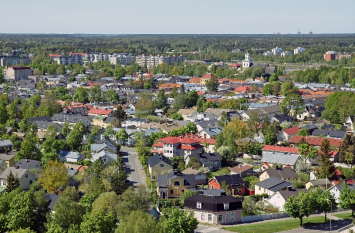
二、自然地理
1.地理条件
Rauma and the surrounding municipality of Rauman maalaiskunta (rural commune of Rauma) were merged in 1993. The communes of Kodisjoki and Lappi also merged with Rauma in 2007 and 2009 respectively.
Neighborhoods and suburbs of Rauma include: Tarvonsaari, Merirauma, Uusi-Lahti, Kappelinluhta, Paloahde, Haapasaari, Syvärauma, Kinno, Kaaro, Luostarinkylä, Impivaara, Äyhö, Uotila, Lajo, Nikulanmäki, Lensunkallio, Nummi, Pyynpää, Otanlahti, Pidesluoto, Komppi, Lonsi, Polari, Sampaanala, Paroalho, Kourujärvi, Kortela, Monna, Kourujärvi, Kodisjoki, Lappi.
2. 交通情况
Rauma is located between Turku and Pori by the national road 8 (E8). Finnish national road 12 starts from Rauma and it was extended to the port of Rauma in 2008. A railway connection from Kokemäki is in active freight use, as there is a straight connection to the heavy industry areas and to the port of Rauma. The rail passenger traffic ended in 1988.
Satakunnan Liikenne Oy runs the local bus traffic and it has 3 lines in Rauma. The hub for the local buses is located in Savila while the Long distance buses operate from Rauma bus station. The long distance buses take passengers directly to Pori and Turku and to Tampere and Helsinki with one transfer at Huittinen. The nearest airport is located in Pori. The port of Rauma serves only freight ships on frequent basis.
三、经济发展和规模
As a coastal city, Rauma has always lived by the sea and traded by sea. For centuries, the city has received foreign influences like other port cities. Rauma is known for traditional industrial companies.
Shipbuilding in Rauma began as early as the 16th century, when the first Ship Carving Workshop was established in the city. Sailing ships were built in Rauma until the end of the sailing ship era, and in the 19th century Rauma had even the largest sailing fleet in Finland. The most famous of the sailing ships is the sailing ship built in Rauma in 1891, the schooner Uljas, which was burned and sunk with solemn expenses in June 1950. The ship lies at a depth of 40 meters in front of Rauma in Valkiakari.
四、产业特点/重点项目
Rauma is known for traditional industrial companies. Some of these are Oras Oy, the leading European manufacturer of plumbing fixtures, as well as the large forest industry operators UPM, Metsä Fibre and Forchem Oy, which specialises in the refining of tall oil.
After World War II, Rauma developed into an industrial city, the main industries being shipbuilding, paper and pulp mills, and metal industry. Rauma is also the fifth largest port in Finland with almost six million tonnes of shipping per year. Olkiluoto Nuclear Power Plant is located next to Rauma, in Eurajoki. Near Rauma, there is the static-inverter plant of Fenno-Skan.
五、风景名胜,景点( attractions)
1. Old Rauma
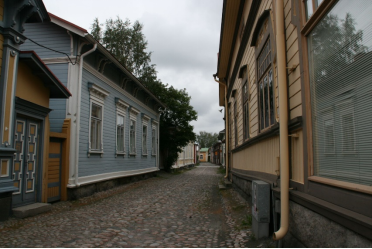
Old Rauma is the wooden city centre of the town of Rauma, Finland. It is listed as a UNESCO World Heritage Site. The area of Old Rauma is about 0.3 km², with approximately six hundred buildings and about 800 people living in the area. The town of Rauma expanded outside the Old Rauma proper only in the early 19th century. The oldest buildings date from the 18th century, as two fires of 1640 and 1682 destroyed the town. Most buildings are currently inhabited and owned by private individuals, although along the two main streets and around the town square they are mainly outside in business use. Locations of special interest include the Kirsti house, which is a seaman's house from the 18th and 19th centuries, and the Marela house, which is a shipowner's house dating to the 18th century but with a 19th-century facade, both of which are currently museums. Other sights include the rare stone buildings of the Old Rauma: the Church of the Holy Cross, an old Franciscan monastery church from the 15th century with medieval paintings and the Old Town Hall from 1776. Another church in Rauma, the Church of the Holy Trinity, also from the 15th century, burned in the fire of 1640.
2. Sammallahdenmäki
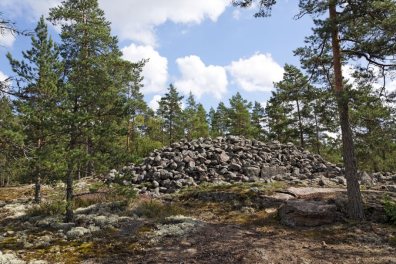
Sammallahdenmäki is a Bronze Age burial site in Finland in Rauma. It was designated by UNESCO as a World Heritage Site in 1999, and includes 36 granite burial cairns dating back more than 3,000 years, to 1,500 to 500 BC. It is located on a hill in a remote area off the road between Tampere and Rauma. Originally, it was near the coast of the Gulf of Bothnia, but the land has risen so it is now 15 kilometers from the sea. It is one of the most important Bronze Age sites in Fennoscandia. Four of the cairns were excavated by archaeologist Volter Högman in 1891, including Kirkonlaattia, an unusual rectangular cairn covering 16 x 19 metres with a flat top, and Huilun pitkä raunio, which is surrounded by an ancient stone wall.
3. Rauma Maritime Museum
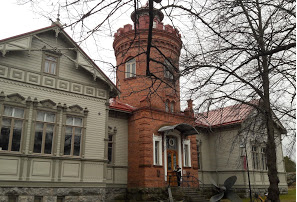
Rauma Maritime Museum (Finnish: Rauman merimuseo) is a museum in Rauma, Finland held by Rauma Maritime Museum Foundation. The museum opened in the former Maritime School in 2004.
六、历史文化
1.历史
In the 14th century, before being declared as a town, Rauma had a Franciscan monastery and a Catholic church. In 1550, the townsmen of Rauma were ordered to relocate to Helsinki, but this was unsuccessful and Rauma continued to grow.
Practically the whole wooden part of the town of Rauma was devastated in the fires of 1640 and 1682. The city centre, which was as large as the town was until 1809, has approximately 600 wooden buildings. The neo-renaissance style of many of the houses is a result of prosperity brought on by seafaring. In 1897 Rauma had the largest fleet of sailing boats in Finland, totaling 57 vessels. Goods were mainly exported to Germany, Stockholm and the Baltic states. In the 1890s, Rauma got a teacher's college (a 'seminar'), which was later annexed to the University of Turku. A part of the department of education still exists in Rauma. The name Rauma comes from the Germanic word strauma, meaning "stream".
After the end of the Second World War, F.W. Hollming Oy's shipyard to manufacture warships for the Soviet Union. By 1952, Hollming Shipyard had built a total of 34 wooden schooners. Following the completion of the war reparations, the yard shifted to the manufacture of modern steel-structured vessels, which were delivered until the 1970s mainly to Soviet subscribers. Three sailing ships can still be seen in Rauma. Priki Gerda, schooner Kathrina and your beer Marita are anchored in the sailing ship harbor, in the Otanlahti beach park area in Poroholma resort, where they serve e.g. restaurants.
When King Gustav I Wasa founded Helsinki in 1550, he issued an edict that obliged the citizens of Rauma as well as Porvoo, Ekenäs and Ulvila to settle in the newly founded city. As a result, Rauma was depopulated in the meantime until the resettled citizens were allowed to return to their hometowns after a few years.
In 1640 and 1682, two devastating city fires devastated Rauma. Since then, the city has been spared fire, which is a rarity for a wooden house town. From the 17th century, Rauma prospered through seafaring. The sailing fleet brought prosperity to the city, which is reflected in the magnificent wooden houses of the old town. From the 18th century, Rauma became a center for lace making; to this day it is a traditional craft in the city.
It was only in Russian times (from 1809) that Rauma grew beyond the borders of the old town. After the Second World War, the city developed into an industrial location.
Over 30 Lapinraunio (Swedish Lapprösen) plants can be found near Rauma. The burial mounds date from the Bronze or early Iron Age. Rauma may have originated in the late Middle Ages. The name is derived from the old Norse word strauma for "river". In the 14th century there was already a Franciscan monastery and a church that belonged to the Dacia Province. At the time, Rauma, like all of Finland, belonged to Sweden. On April 17, 1442 Rauma was granted city rights. This makes Rauma the third oldest city in Finland after Turku and Porvoo. The urban area of Rauma expanded in 1993 through the incorporation of the rural community Rauma and in 2007 through the incorporation of the municipality Kodisjoki. Furthermore, the municipality of Lappi was incorporated at the beginning of 2009.
2. 文化体育
Rauma has its own dialect of Finnish, "Rauman giäl". The dialect inherits words from languages such as Swedish, English and German due to the seafaring past. The dialect has been diluted into mainstream Finnish in day-to-day use, but it is fairly well studied (mainly by Hj. Nortamo) and practiced as a hobby. Rauma Maritime Museum in the Rauma Nautical School building was founded in 1999.
Rauman Lukko is an ice hockey team that hails from Rauma, playing in Liiga. Their home arena is Äijänsuo Arena. Local football teams are Pallo-Iirot and FC Rauma. These two teams share the same home field at Äijänsuo sports centre. Sea City Storm is an American football team playing in the Finnish American Football Association's 2nd division. Fera is a women's Finnish baseball team, whose home field is the Länsi-Suomi Arena at Otanlahti sports centre. Rauma also has an own orienteering club, Rasti-Lukko, two Basketball teams known as Kaaron Roima and Rauma Basket, a rinkball team called UKP and a floorball team named SalBa.
七、其他信息
Lace Week
Annual Lace Week has been arranged in Rauma since year 1971. During the Lace week local craftspeople arrange small exhibitions in the Old Rauma area. The Lace week culminates to the Black Lace Night, when the small boutiques are open late night, various shows and concerts are held and people dress in black lace.
One popular saying goes that every family in Rauma owns a boat – this is not true, though the city has room for ca. 2,800 boats at its docks. People can use their own boats or water buses to get to the Kylmäpihlaja lighthouse that doubles as a hotel and recreation site. Water buses take people to Reksaari island and former garrison island of Kuuskajaskari. Both islands are in recreational use.
八、联系方式
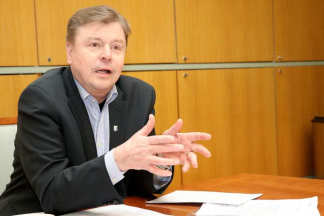
Mayor of Rauma: Kari Koski
Website: www.rauma.fi
Phone number: 02 834 11/ 02 834 5000
Address: Kanalinranta 3, PL 41, 26101 Rauma
Email: irjaamo@rauma.fi
